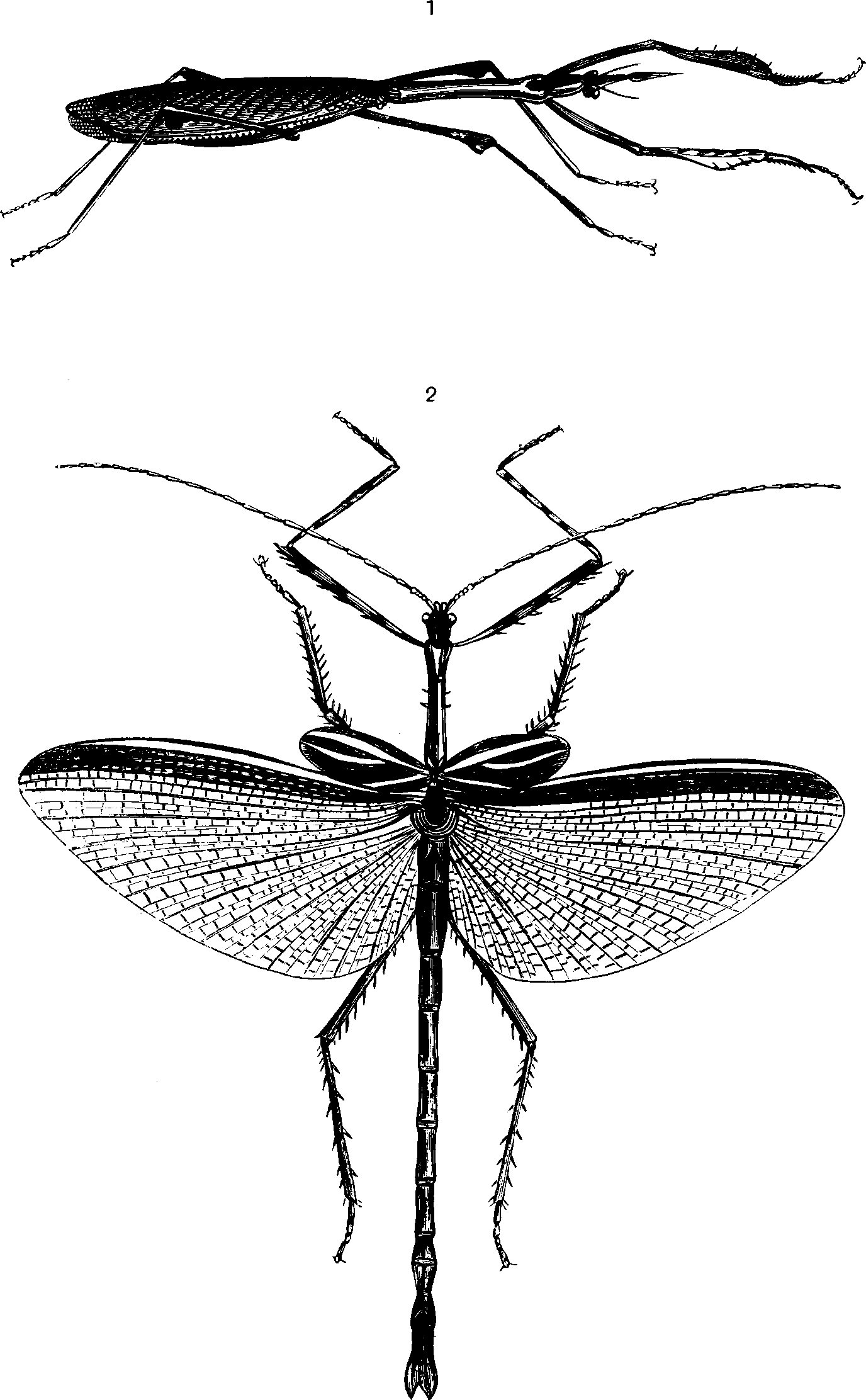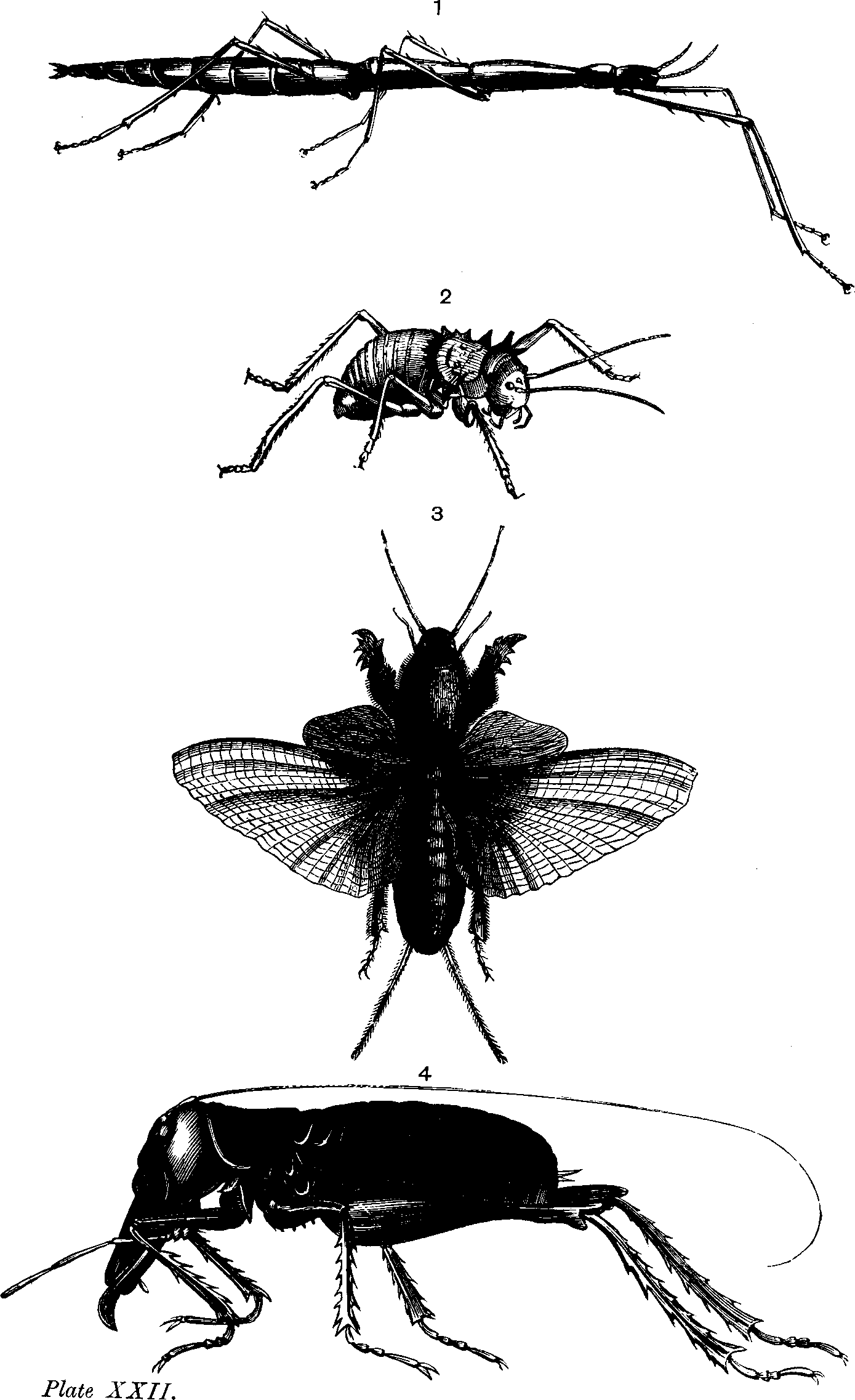
by
W. F. Kirby
Assistant in Zoological Department, British Museum (Natural History), South Kensington, and co-secretary to the Entomological Society of London.
With 87 Plates containing over 650 Figures.
London
W. Swan Sonnensohein and co.
Paternoster Square
1885
| ! | Please note: this is not a primary source and does not exactly reproduce the original document. In particular, the layout will be very different to the original, due simply to the limitations of HTML as an information medium. However, you should also exercise caution with respect to the text presented here. In order to be reproduced here, the original paper has photocopied, scanned into a computer, OCRed (to turn the page image into text), and then hand corrected. Any or all of these steps could have introduced errors. If you would like to use the information herein for research purposes, you are strongly advised to view an original. Should you find any errors of reproduction, please let the maintainer of this web page know. | ! |
| Page iii |
Now that entomology is attracting so much interest among all classes, and has become such a favourite pursuit, it appeared to the author of the present work that there was room for a book of moderate size, in which the most typical and remarkable insects of all orders, and from all parts of the world, should be popularly described and figured. Previous works on entomology have generally treated only of a single order of insects, or else of British insects. This Text-Book is chiefly intended as a compressed popular Introduction to the classification of insects in general, and by the careful omission of all technicalities not absolutely necessary for this object, sufficient space has been gained to give a short and readable, though necessarily somewhat condensed, account of all the families of insects, interspersed with occasional observations on their habits and economic importance, preference being given to those which have not previously appeared in English popular works.
W. F. Kirby.
| Page 83 |
PRAYING INSECTS.
FAMILY III. -
Mantidæ.
Body long and slender; front legs thickened and serrated; habits predatory.
The Mantidæ, or Praying Insects, are celebrated for their habit of resting on their four hind legs, with their front legs raised in the air in what was long supposed to be an attitude of devotion, but really in an observant attitude, and on the alert for their prey. These insects are not found in England, but are very common in warm countries, and several species are met with in South France. The best known of these is Mantis Religiosa, Linn., a green species measuring an inch and a half or two inches in length. Most of the Mantidæ are of a green colour, which doubtless helps to conceal them from their prey. One of the prettiest species is Harpax Ocellaria, Drury, which is found on the west coast of Africa, and measures about two inches across the wings. The tegmina are dark green, with a large yellow eye-like spot in the centre, and the tips and hind wings are transparent.
FAMILY IV. - Phasmidæ.
Body long and slender; all the legs fitted for walking; plant-feeders.
The Phasmidæ include the Stick Insects or Spectre Insects and the Leaf Insects. Many of the species have very long and slender bodies and legs, and resemble dried pieces of stick. A large number are apterous, and others have very short tegmina and wings, which must be quite useless for flight, while in others, again, the tegmina are very short, and the wings are ample. In the last case the tegmina are generally of a greenish colour, while the wings are often of a most delicate pink. Among the more interesting species we may mention Cyphocrania Semirubra, Serv., from Brazil, with short greenish elytra and ample pink wings, as we have just described; Phibalocera Pythonius, Westw., a green, stout, wingless insect, seven or eight inches long, which has a striking resemblance to a shoot of bamboo; and Lopaphus Cocophages, Newp., a brown slender insect, with very short wings and tegmina. The two latter species are common in the South Sea Islands, where L. Cocophages sometimes commits dreadful ravages in the plantations of cocoa-nut trees. When this insect is alarmed it squirts out a highly acrid fluid, which causes great pain, and sometimes blindness, if it reaches the eyes. Many other species of
| Page 84 |

| Plate XXI. | ||
| ORTHOPTERA. | ||
| FIG. | Mantidæ. | PAGE |
| 1. | Empusa Pauperata, Fabr. | 83 |
| Phasmidæ. | ||
| 2. | Cyphocrania Goliath, Gray (reduced) | 83 |

| Plate XXII. | ||
| ORTHOPTERA. | ||
| FIG. | Phasmidæ. | PAGE |
| 1. | Bacillus Rossii, Fabr. | 83 |
| Achetidæ. | ||
| 2. | Hetrodes Pupa, Linn. | 84 |
| 3. | Gryllotalpa Vulgaris, Linn. | 84 |
| 4. | Anostostoma Australasiæ, Gray | 84 |